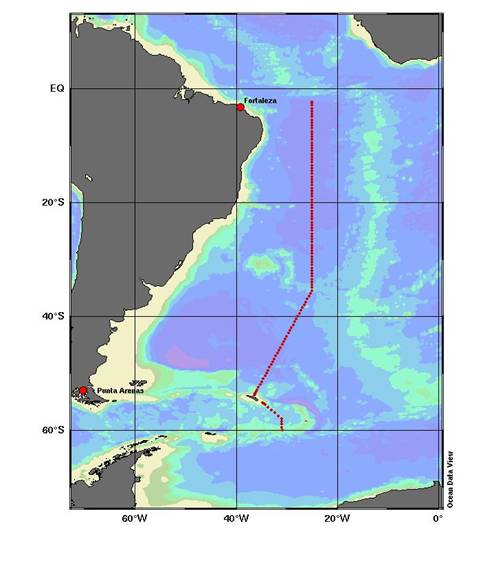Do the organic substances drifting into the sea increase the greenhouse effect?

Researchers hypothesize that heterotrophs (tiny organisms that break down carbon compounds), break down "mysterious" organic materials and release decay products into their environment, these materials together with the ocean trenches are the subject of research.
It is known that the coral exposed to solar radiation plays an important role in the chemistry of the oceans, solar radiation breaks down the coral and can cause the emission of greenhouse gases, as well as sulfur compounds and iron concentrations. Iron is an important "marine fertilizer". Greenhouse gases, as we know, cause warming, while sulfur compounds create cloud formations - cooling.
The phenomenon of the trench is unknown, since it can be seen on the surface of the water, but what happens at depth is not clear, since there is a considerable difference in exposure to the sun between the upper layer and that trench at depth.
Understanding the marine trench is important for understanding the life in the sea and the ways in which this life is affected, as well as the effects on the composition of the water and the "use" of light.
In satellite observations, it was common to think that the different shades of water color can be attributed to the amounts of phytoplankton. A group of researchers who tried to check the causes of the color of the water in the Sargos Sea found out that one of the most important factors for the color is the hantz, a "discovery" that led to the establishment of a special team to study the hantz.
By measuring the amount of light that the ocean absorbs and emits, it is possible to estimate the amount of light available for chemical and biological activity that requires light, the amount of light available is closely related to the quantity, bulk and depth of the reef. Biological and chemical cycles are also related to the reef, the importance is clear and understandable. In preparation for the study, there are those who describe the Hantz as one of the more important factors. Long live the oceans.
Currents in the oceans can be identified by the changes in the color of the water, the amount of chlorophyll producers (green color) such as phytoplankton and algae is an important indicator of the health of the oceans. A detailed study by the Hantz in combining data on the colors of the oceans obtained from satellites will allow a better database than the existing one, identifying problems or alternately finding solutions.
Dr. Assaf Rosenthal, ecologist.
Tour guide/leader in Africa and South America.
For details: Tel. 0505640309 / 077-6172298,
Email: assaf@eilatcity.co.il

2 תגובות
I agree with Ami Bachar's opinion. Very interesting article.
And in addition, an important thing:
The question is whether it is not possible to control the color of the ocean, and hence also the amount of absorption of solar energy in the oceans. This could be a solution to global warming!
Gives me an idea for writing a new article.
Father, with your permission.
good weekend
Sabdarmish Yehuda
Good article!
Thanks.